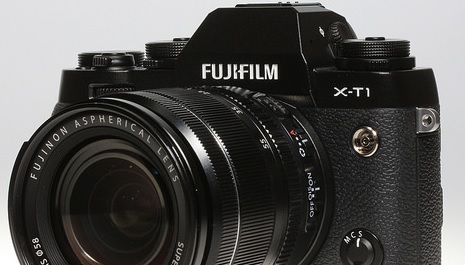
- NEW FUJI FULL FRAME MANUAL
- NEW FUJI FULL FRAME FULL
- NEW FUJI FULL FRAME ISO
- NEW FUJI FULL FRAME SERIES
You can navigate through using the D-pad, selecting options with the center button. The first thing I do with any camera is turn off touch completely, but if that’s something you want, be aware that it’s not here. There’s no touch capability when browsing the menu system on the screen (as with previous models, the touch features are limited to focus and shooting). You’ll still want to get into the menu system, which I found easy to navigate (but I am coming from Sony, which I think has the most confusing menus in a camera). Not everything can be controlled with dials. But the X-T5 isn’t priced or aimed at entry-level photographers anyway, so I don’t see this as a huge issue.
NEW FUJI FULL FRAME ISO
That requires turning the shutter speed dial, ISO dial, and lens aperture dial to A setting, which is cumbersome.
NEW FUJI FULL FRAME FULL
The only time the dials got in the way was when I wanted to put the camera in full auto mode so my kids could try it.
NEW FUJI FULL FRAME MANUAL
The X-T5’s manual features serve a purpose-to get the technical aspects of photography out of your way quickly so you can focus on the creative part. That way, the exposure is dialed in and you can focus on composing. They serve a purpose you can set all those things before you bring the viewfinder to your eye. The manual dials to control ISO, shutter speed, and (on most lenses) aperture aren’t there to make the X-T5 look cool or retro. Film cameras were designed the way they were because it was the simplest method of making all the settings available to the user. Some might argue that appearances don’t matter or that Fuji cameras are for hipsters, but I think that misses the point. I spent three weeks with the X-T5, and in that time I had two people come up to ask if I was shooting with film. It looks like my old Nikon F3 from the 1980s, instead of a modern digital camera. The other half of that character is the design of the camera body. The new sensor retains everything Fujifilm fans love about color, rendering, and the character that these cameras and lenses produce. Fujifilm lenses have a warmth and color rendition that’s unique to the X Series. The upgraded sensor hasn’t lost the distinctive character of Fujifilm images, which to my mind is actually more than just those in-camera JPGs. I happen to like the old film stock recipes that Ritchie Roesch of Fuji X Weekly makes available. Why post-process if you don’t need to? There are hundreds of “recipes” around the web for tuning the in-camera JPGs to simulate various looks, from old film stock to whatever creative look you’re into. When you meet rabid fans of Fujifilm cameras, this is usually the thing that hooked them.

First, there is the distinctly Fuji output of the images, especially the in-camera JPGs, which can be customized, tweaked, and tuned in ways that no other camera maker even begins to approach. Now for the character, which I think of in two parts. I’ve read that other reviewers have had similar experiences, which makes me hope this is something Fujifilm will address in a future firmware update. What troubled me more than the speed was that sometimes the autofocus just missed, especially with eye-tracking turned on. For most people’s purposes, though, the X-T5’s system is good enough. If you need extremely fast, completely accurate autofocus, you’re better off with Nikon, Canon, or Sony. This is part of the new autofocus system which, while very good within the Fuji X-series cameras, is not that great compared to what you get with Nikon or Canon systems. There is also a new processor, which Fuji claims is four times faster than the previous model.
While 3200 is still usable, I would not go above that.

In testing, I found that once you went over this, noise became more of an issue. I tend to use fast lenses in low-light situations, and I rarely shoot over 1600 ISO. That said, performance will depend somewhat on how and what you shoot. As noted, the 40-megapixel sensor is wonderfully detailed and doesn’t fall victim to the higher noise issues that sometimes come with more megapixels. The new X-T5 is very much geared toward still photographers, and it manages to strike a near-perfect balance between technical chops and that ill-defined thing photographers call “character.”įirst, the technical chops. The clear message is that if you want a high-end hybrid still and video camera, the X-H2 is the one for you.
NEW FUJI FULL FRAME SERIES
Likewise, it’s missing the flip-out variable-angle rear screen that was so handy for shooting video (again, it’s been relegated to the X-H series cameras). The X-T5 shoots surprisingly good video footage but lacks some high-end features-like ProRes support (available over HDMI)-that you’ll find on the X-H2.


 0 kommentar(er)
0 kommentar(er)
